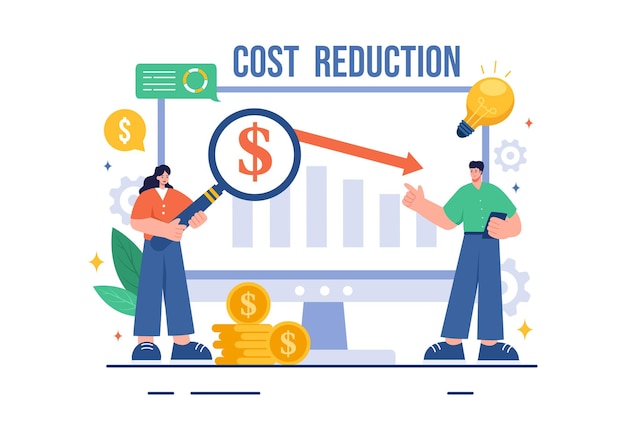In the ever-evolving landscape of commercial real estate, managing operational expenses is more critical than ever. Utility costs, often creeping upwards with little warning, can pose significant challenges for building owners and managers alike.
However, innovative solutions abound for those willing to explore them. From cutting-edge energy-efficient technologies to mindful behavioral shifts among occupants, there exist a myriad of approaches that promise to lighten the financial load associated with electricity, water, and heating.
This article delves into three of the most effective strategies for slashing utility expenditures in commercial buildings, paving the way for a sustainable and economically sound future. Embrace the potential of these transformative options and watch as your bottom line begins to flourish.
1. Implement Energy-Efficient Lighting Solutions

Implementing energy-efficient lighting solutions can dramatically transform your commercial buildings utility expenses while enhancing the work environment. Start by swapping out traditional incandescent bulbs for LED alternatives, which consume up to 75% less energy and last significantly longer.
Not only do these modern lights provide superior illumination, but they also reduce maintenance costs due to their extended lifespan. Consider integrating smart lighting controls—motion sensors and dimmers—that adjust brightness based on occupancy and natural light, creating a dynamic lighting experience tailored to your spaces needs.
Furthermore, opting for daylight harvesting systems can maximize the usage of available sunlight, minimizing reliance on artificial lighting during the day. These strategies create a triple benefit: lower energy bills, a greener footprint, and a more pleasant ambiance for employees and visitors alike.
2. Upgrade HVAC Systems for Enhanced Performance
Upgrading HVAC systems is a pivotal strategy for boosting performance and cutting utility costs in commercial buildings. Think about it: an old, inefficient system not only struggles to maintain a comfortable environment, but it also drains finances faster than you can imagine.
By investing in modern, energy-efficient units that utilize smart technology, businesses can achieve remarkable savings. These systems don’t just cool or heat the air; they adapt to real-time occupancy levels and energy prices, optimizing their functionality based on current needs.
Moreover, improved filtration and humidity control contribute to a healthier indoor environment, which can enhance employee productivity and well-being. The upfront investment may seem daunting, yet the long-term benefits—through reduced energy bills and increased property value—make it a wise financial move that pays dividends for years to come.
3. Utilize Smart Building Technologies

Incorporating smart building technologies is a transformative strategy for reducing utility costs in commercial buildings. Imagine a system where your lighting, heating, and cooling systems communicate seamlessly, adjusting in real-time based on occupancy and outdoor conditions.
By leveraging IoT sensors, for instance, businesses can monitor energy usage with pinpoint accuracy, identifying trends and inefficiencies that may have otherwise gone unnoticed. Advanced analytics can predict peak usage times, allowing buildings to optimize energy consumption and even participate in demand response programs that provide financial incentives.
Furthermore, automated systems can dynamically control energy flow, turning down heating or cooling in unoccupied spaces without sacrificing comfort. This integration not only enhances operational efficiency but ultimately leads to significant savings, proving that smart technology is not just an upgrade—its a necessity for a sustainable future.
Conclusion
In conclusion, reducing utility costs in commercial buildings is not only beneficial for the bottom line but also essential for promoting sustainability in todays environmentally conscious landscape. By implementing energy-efficient systems, upgrading to smart technology, and investing in high-performance appliances like commercial front load washing machine, businesses can significantly lower their utility expenses while minimizing their ecological footprint. These strategies not only enhance operational efficiency but also contribute to a more responsible and cost-effective business model.
By prioritizing these solutions, building owners can create a more sustainable future while enjoying the financial benefits of reduced utility costs.


